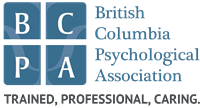When Words Heal: Poetry, Therapy, and Hypnosis

Exploring how poetic language, therapeutic process, and hypnotic rhythm converge to awaken the deeper layers of healing.
By Dr. Harilaos Stefanakis, Ph.D., R.Psych.
Therapy and poetry share a quiet secret: both depend on language not merely to describe reality but to transform it.
In my clinical work, I have discovered that poetry can reach places that analysis alone cannot touch. Poems bypass the defenses of logic and speak directly to sensation, emotion, and memory. They invite the implicit mind, the part that feels, dreams, and imagines, to participate in healing.
This mirrors the aims of therapy and hypnosis. Like poetry, both rely on rhythm, metaphor, and resonance to open us to new possibilities. In both disciplines, words are not just communicative — they are transformative.
Research in neuroscience increasingly supports this view. Studies using fMRI have shown that metaphorical and emotionally rich language activates not only linguistic centers but also sensory, motor, and affective regions of the brain. For example, reading a phrase like “her voice was velvet” engages the somatosensory cortex associated with touch, while “he grasped the idea” activates motor regions linked to the hand. This embodied simulation suggests that poetic language can evoke experiences rather than merely describe them.

Similarly, research on hypnosis (e.g., Jensen et al., 2015; Oakley & Halligan, 2013) demonstrates that imagery, rhythm, and suggestion modulate perception, alter neural connectivity, and reduce pain and distress. These findings affirm what poets and therapists have long intuited — that language, when embodied and affectively charged, can reorganize experience at both neural and emotional levels.
In my practice, I’ve found that certain poems can meet clients precisely where cognitive insight cannot reach — restoring voice, vitality, and meaning. When integrated thoughtfully, poetry complements evidence-based work by deepening affect regulation, evoking imagery, and helping clients access embodied experience. It slows the mind while awakening the senses, inviting clients to experience change rather than merely talking about it.
In my book CORE Hypnosis: A Compassion-Informed Therapy, I explore this intersection of compassion, language, and transformation. There I describe how poetic rhythm and hypnotic language both engage the body’s natural capacity for healing through entrainment, imagery, and resonance.
My new book, Words That Mend: Verses in Resilience and Renewal, extends this exploration into the creative realm. Each poem was born from the therapeutic space, from moments of silence, reflection, and renewal that could not be captured by clinical dialogue alone. The poems are both meditative and evocative, crafted to invite a felt experience of transformation (see, for example, the excerpt below).
Or I am the cedar craft on the river,
a vessel given by grace,
oars of purpose,
current for companion.
I take the water’s way
not to conquer, but to consent
to meet what comes
as if I had been expecting it all along.
Reading a poem with openness can, in itself, be a hypnotic act. The rhythm of lines slows breath and anchors awareness. Imagery activates embodied memory. Meaning arises not through interpretation, but through resonance. In this way, poetry becomes a kind of self- hypnosis, a conversation between conscious and unconscious that restores balance and coherence.
Poetry, therapy, and hypnosis share the same pulse: the gentle art of restoring coherence through language, rhythm, and presence. Each reminds us that beneath the surface of words lies the possibility of renewal and that to listen deeply is already to begin to heal.
Bibliography:
Citron, F. M. M., & Goldberg, A. E. (2014). Metaphorical sentences are more emotionally engaging than their literal counterparts. Journal of Cognitive Neuroscience, 26(11), 2585–2595.
Lacey, S., Stilla, R., & Sathian, K. (2012). Metaphorically feeling: Comprehending textural metaphors activates somatosensory cortex. Brain and Language, 120(3), 416–421.
Jensen, M. P., Adachi, T., & Hakimian, S. (2015). Brain oscillations, hypnosis, and hypnotic suggestion. The American Journal of Clinical Hypnosis, 57(3), 230–253.
Oakley, D. A., & Halligan, P. W. (2013). Hypnotic suggestion: Opportunities for cognitive neuroscience. Nature Reviews Neuroscience, 14(8), 565–576.
Stefanakis, H. (2021). Core Hypnosis: A Compassion Informed Therapy. Friesen Press, Victoria BC.
